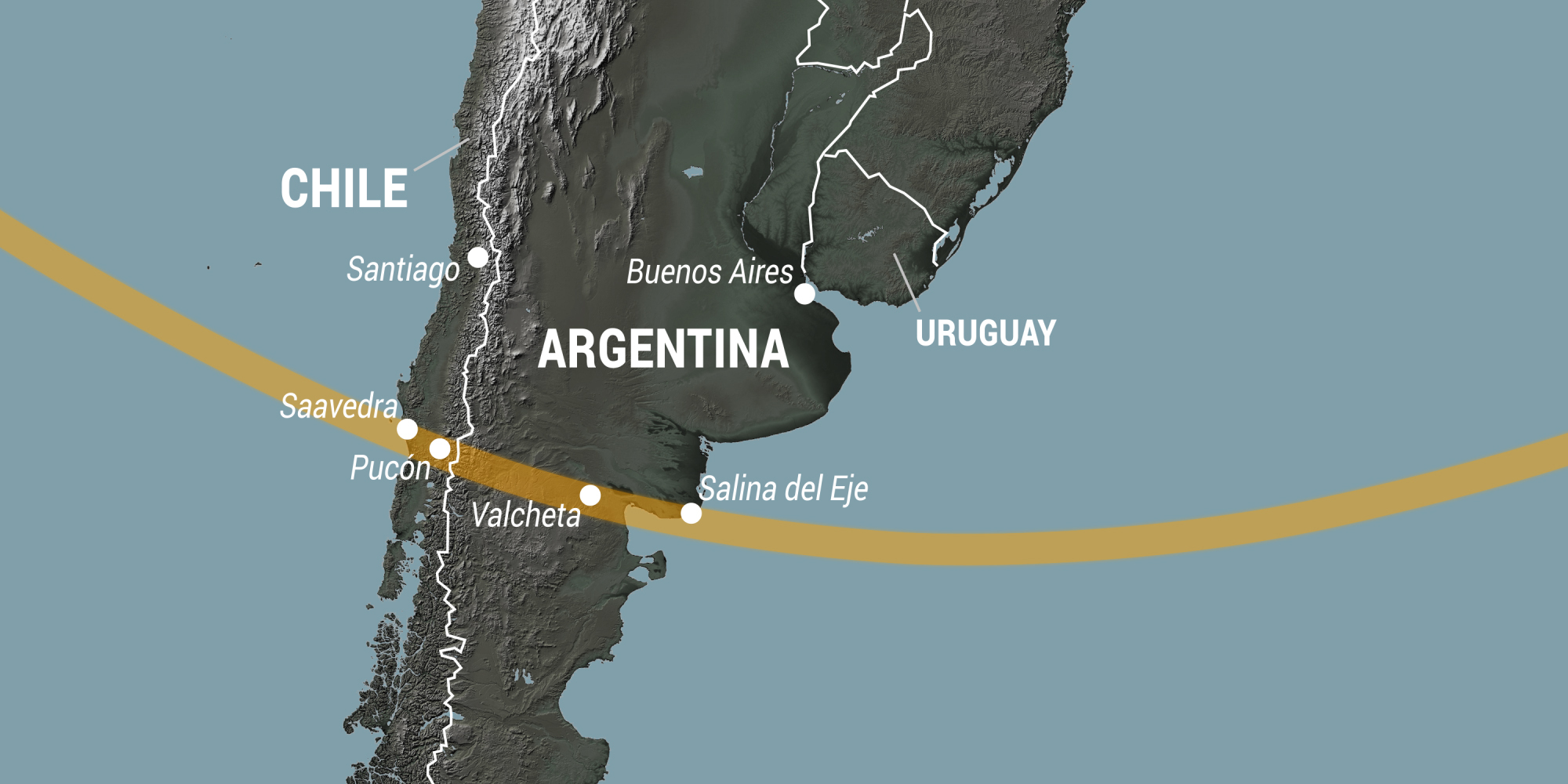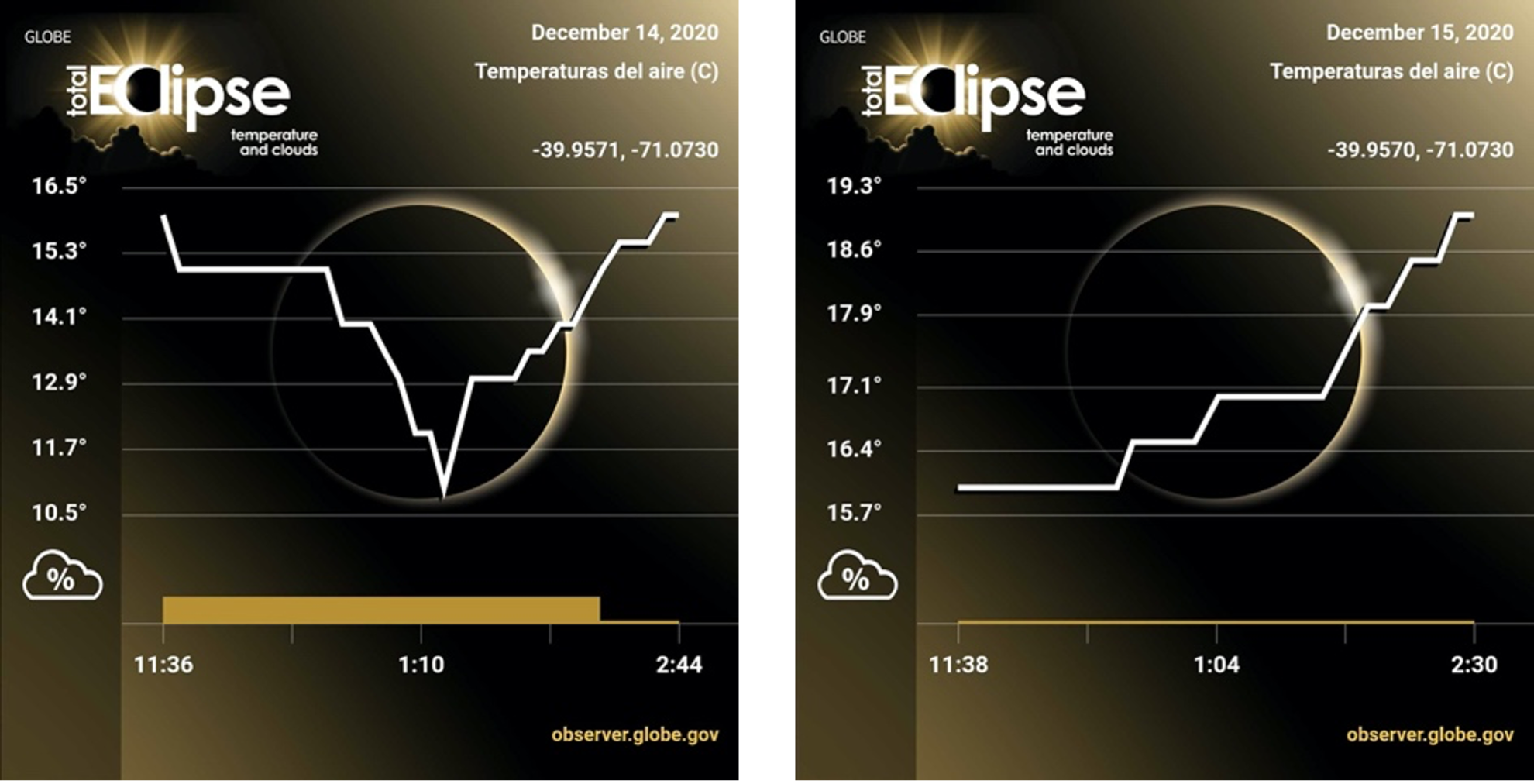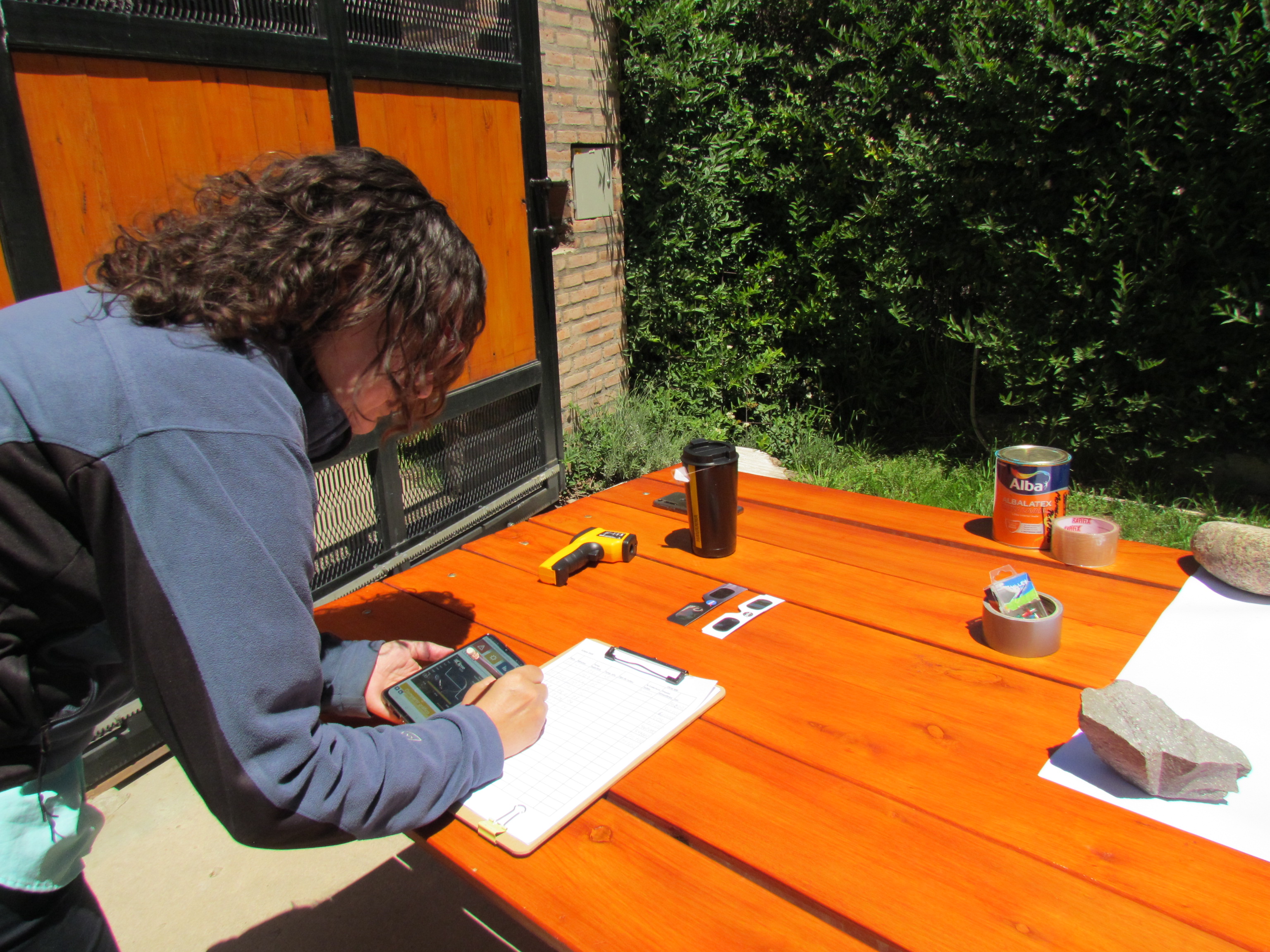News - GLOBE Observer
2020 Total Solar Eclipse – Observations from the GLOBE Community
Leer este artículo en español.
On Monday, 14 December 2020, South America was treated to a fantastic astronomical event – a total solar eclipse. Those in the path of totality had the opportunity to experience an awe-inspiring sight – the Moon completely covering the Sun and allowing the Sun’s atmosphere, known as the corona, to be seen.

The path of totality stretched from Saavedra, Chile to Salina del Eje, Argentina. Observers in other parts of Chile and Argentina, as well as elsewhere in South America, were able to see a partial solar eclipse, when the Moon covers part, but not all, of the Sun’s disk.

Aside from the wow factor, eclipses are also interesting opportunities to observe how the atmospheric conditions change when the Sun’s light is temporarily blocked. To help our GLOBE Program citizen scientists (students, teachers, and the public) with that data collection, we made available the temporary Eclipse tool in the GLOBE Observer app. This tool allows anyone with a GLOBE account in the area of the eclipse to submit air temperature and cloud observations. While we have more work to do analyzing the data, we wanted to give a preliminary report on the results of this eclipse and share some of the photos sent to us by members of the GLOBE community.



On the day of the eclipse, we received over 960 air temperature measurements from South America, 856 of which were in the area experiencing the eclipse, as well as 232 clouds observations. These represent contributions from nearly 100 unique observers. You can see the data points on the map below. The pins represent air temperature measurements, the cloud icons represent observations of sky conditions. The dark stripe is the path of totality itself, and the other lines show the varying levels of maximum obscuration throughout the area.

As an example of the data collected, see these two graphs of air temperature. On the left, you can see the day of the eclipse, 14 December. On the right is data from 15 December, the day after the eclipse, and for about the same time period. The day of the eclipse shows a clear drop and then increase in temperature, while a normal day shows just the increase in temperature through the middle of the day (note that the y-axes of the two graphs don’t start at the same number – data from both days starts between 15 and 16 degrees Celsius, but the axes adjust to the values in the data.)


For those not in the path of totality, there was still an opportunity for observing the partial eclipse, and also collecting temperature data. For example, here is a graph and image from the city of Alejandro Roca in Córdoba, Argentina. This location experienced a maximum coverage of the Sun of about 65%. Even with only a partial eclipse, you can see how dark the sky became, and the temperature still dropped several degrees.

This is the actually the second total solar eclipse in two years for South America. On 02 July 2019, an eclipse passed further north of this one, although it took place near sunset, which is not as good for eclipse viewing. This year’s eclipse occurred during the middle of the day. The Sun was higher in the sky, making for much better eclipse viewing, and data collection. We look forward to seeing the results of investigations by GLOBE students and teachers in South America, as well as doing more data analysis ourselves. Visit the GLOBE Observer eclipse page for examples of data from past eclipse, student research reports, and tips for analyzing the data, and check back there for updates related to this eclipse over the next few weeks and months.
Comments
View more GLOBE Observer news here.








